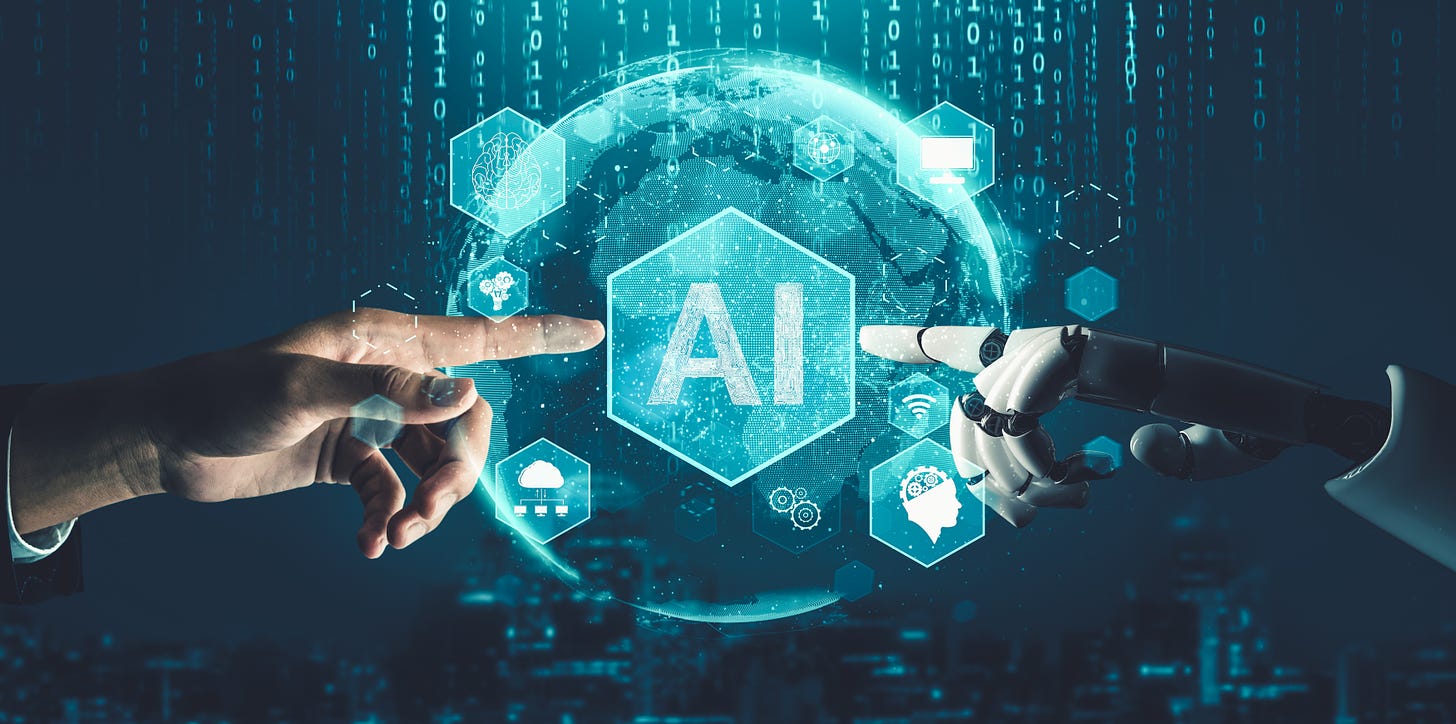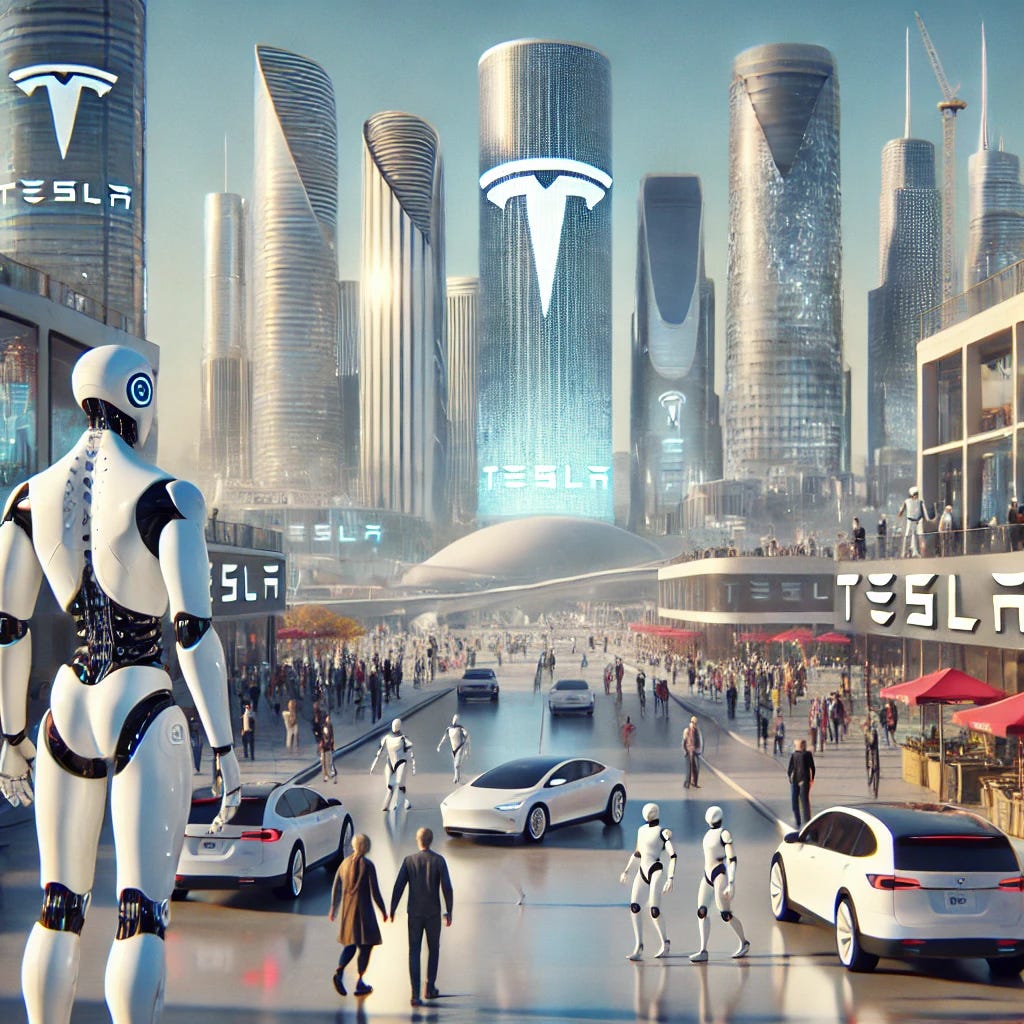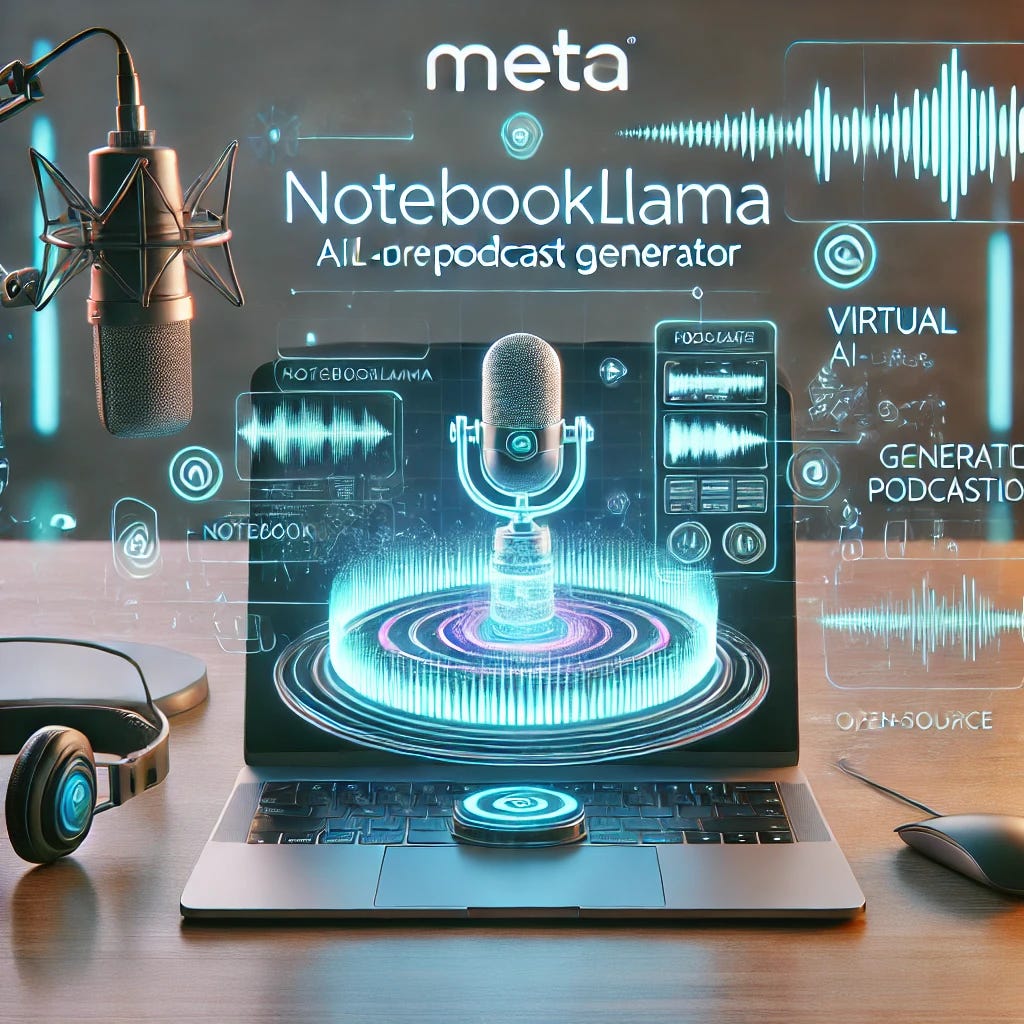Geeky Weekend Digest | 02.11.2024
In this weekend’s #GeekyWeekendDigest - New open-source AI standards, Musk’s robot future, Meta’s AI podcast generator, and a gripping sci-fi read.
Step into the future with the latest Geeky Weekend Digest, where each issue celebrates the drive for progress and the innovators steering it forward. This week’s selection captures standout breakthroughs, scientific milestones, and the guiding principles of Terra 2.0, painting a vision of a future where human insight and technology merge seamlessly. Explore content that challenges convention, tech redefining what’s possible, and resources guiding us toward a balanced, interconnected world. Designed for curious minds, tech enthusiasts, and advocates for a sustainable future, this digest brings a weekend of insights and the promise of tomorrow’s horizon
Defining Open Source AI: New Standards for Transparency and Innovation
The Open Source Initiative (OSI) has released a groundbreaking Open Source AI Definition (OSAID) version 1.0, offering clarity on what truly qualifies as open-source artificial intelligence. After two years of collaborative discussions, the OSI has established guidelines aimed at fostering transparency, innovation, and preventing open washing—the misleading use of “open source” terminology for partially restricted systems.
OSI’s Role in Defining Open Source AI
The OSI’s efforts are centred on upholding the core values of open source in AI systems by establishing the following freedoms:
Free usage of the AI system by anyone
The ability to study the AI system’s workings
Freedom to modify the AI system for any purpose
Permission to share the system, whether modified or not
The OSI’s guidelines highlight the need for transparency around training data without requiring full dataset disclosure. This approach combats openwashing and offers a reference framework for developers, policymakers, and regulators.
Impact on AI Regulation
As open-source AI evolves, so does its influence on global regulation. The EU AI Act has included partial exemptions for open-source systems, acknowledging their potential to drive innovation while addressing safety concerns. In the US, California’s AI safety bill has stirred debate on liability risks for open-source developers, sparking questions around balancing innovation and regulatory standards.
Key considerations for open-source AI regulation:
Defining regulatory terms for “open-source AI”
Weighing transparency against security risks
Clarifying developer liabilities for open-source models
Avoiding concentration of AI power within large tech firms
Ensuring adaptability within regulatory frameworks
Addressing Openwashing in AI
Openwashing – where companies brand products as open-source while retaining control over critical components – is an issue in the AI industry. Large companies like Meta and Microsoft have faced criticism for selectively disclosing model aspects while withholding key resources like training data.
Resource intensity: High computational requirements limit broad participation
Selective transparency: Critical information, such as training data, is often proprietary
Regulatory gaps: Exemptions for “open-source” models in the EU AI Act may unintentionally support open-washing
These issues underline the need for consistent standards in open-source AI to promote genuine transparency and collaboration.
Key Aspects of OSAID 1.0
OSAID 1.0, introduced by the OSI on October 28, 2024, lays out specific requirements to qualify as open source:
Data Information: Comprehensive details on data sources, processing, and availability
Code: Complete source code for training and usage must be OSI-licensed
Parameters: Access to model weights and configuration settings under approved terms
OSAID 1.0 seeks to balance openness with practicality, aiming to ensure reproducibility without mandating full dataset disclosure.
Why It Matters
The OSI’s Open Source AI Definition (OSAID) 1.0 brings clarity to open-source AI, a field increasingly pivotal in balancing transparency with rapid innovation. Clear standards like OSAID help guide developers and regulators, preventing "openwashing" and ensuring genuine transparency. However, while OSAID is a critical step in defining the open-source landscape, it also highlights a broader gap in today’s AI development. Much of current AI work centres on data, metrics, and computational power but often lacks a deeper integration of ethical, philosophical, and interconnected perspectives on AI’s role across all life forms.
This gap has been underscored in recent proposals calling for a holistic AI repository that goes beyond the technical—one that would blend scientific, spiritual, and ethical insights to build a foundation for AI that respects both human and non-human life. Such a repository could serve as a grounding reference, fostering alignment with shared values as AI evolves. By establishing well-rounded standards, we could encourage developers to see AI as a collaborative entity within a broader ecosystem, rather than purely as a technological tool (more on this in future posts).
Closing Thoughts
As the AI landscape evolves, frameworks like OSAID 1.0 are vital to promote transparency, authentic open-source development, and a collective vision for AI’s future. But as we move forward, there's an undeniable need for more holistic initiatives. Concepts calling for repositories that combine philosophical and ethical perspectives offer a powerful avenue for integrating the essential interconnectedness of life into AI development. Standards that not only address open-source specifics but also encourage ethical considerations can anchor AI’s evolution in shared human values. As AI advances, fostering a development culture grounded in both transparency and respect for all forms of life will be key to ensuring a harmonious and sustainable future.
Tesla’s Ambitious Vision: 10 Billion Humanoid Robots by 2040
At the 8th Future Investment Initiative (FII) conference, held this week in Riyadh, Elon Musk shared his ambitious vision for Tesla’s future, revealing plans that could redefine the robotics and AI landscape. By 2040, Musk predicts that there will be at least 10 billion humanoid robots globally, each priced between $20,000 and $25,000. These robots, branded as Tesla’s Optimus, represent a crucial aspect of Tesla’s long-term growth strategy and, according to Musk, could elevate the company’s valuation to a staggering $25 trillion.
The Optimus robot, currently under development, embodies Tesla’s core technological innovations and its commitment to accessible, high-quality robotics. Musk envisions a world where humanoid robots could play vital roles in industries like healthcare, logistics, manufacturing, and customer service, potentially transforming the global economy. Musk stated, “Robotic taxis will make Tesla about a $5 trillion company. The Optimus Robot, I think, makes Tesla a $25 trillion company.” This bold statement underscores his belief that Optimus could surpass the significance of Tesla’s autonomous vehicles, propelling the company to unprecedented heights.
Musk’s Vision at the Future Investment Initiative
Musk’s conversation at the FII conference was part of a special session hosted by Dr. Peter H. Diamandis, Founder and Executive Chairman of the XPRIZE Foundation. Their dialogue covered the future of AI and the transformative potential of robotics in everyday life, echoing FII’s mission of generating a positive impact on humanity through innovation and investment. FII, which has expanded into a global, non-profit foundation with a dedicated investment arm, focuses on driving solutions that benefit both the planet and society. Musk’s appearance, even via video link, captivated the audience and provided insights into how AI and robotics could fundamentally reshape our future.
Tesla’s long-term strategy around Optimus aligns with Musk’s broader mission to pioneer advancements in AI, pushing boundaries in ways that could reshape the societal and economic landscape. These humanoid robots, capable of performing complex tasks and adapting to different environments, may allow businesses to redefine the workplace and transform entire industries.
For a glimpse into Musk’s ambitious plans, you can watch the conversation between Musk and Dr. Diamandis at:
Why It Matters
Tesla’s plans for 10 billion humanoid robots by 2040 reflect a seismic shift in robotics and AI, signalling an era where these advanced machines may become everyday tools for both businesses and households. With prices potentially as low as $20,000-$25,000, Tesla aims to make humanoid robots financially accessible, opening up possibilities in sectors ranging from healthcare to hospitality and manufacturing. If Musk’s vision becomes reality, it could alter the global economy, making Tesla’s Optimus robots as ubiquitous as smartphones, transforming not only Tesla’s financial future but also humanity’s relationship with technology.
Tesla’s progress with Optimus, coupled with AI advancements, suggests a future where robots will contribute significantly to human productivity. This aligns with the broader movement towards a technologically augmented society, one that echoes ideas from current AI and robotics thought leaders, emphasising ethical responsibility and a holistic understanding of AI’s impact on humanity.
Closing Thoughts
Elon Musk’s predictions highlight the expansive reach of Tesla’s vision, pushing the boundaries of what humanoid robots can achieve. If Optimus lives up to its potential, it could spark a paradigm shift in the workforce, making robots invaluable partners in both professional and personal settings. As we move closer to this reality, Musk’s remarks at FII remind us of the exciting—and sometimes daunting—possibilities AI and robotics hold for the future.
Meta Releases NotebookLlama, an Open-Source AI Podcast Generator
Meta has unveiled NotebookLlama, a new open-source tool designed to transform text documents into AI-generated podcasts, serving as an alternative to Google’s NotebookLM. As reported by TechCrunch, NotebookLlama is built on Meta’s Llama language models and enables developers to customise their workflow, making it a versatile solution for creating podcasts, audio summaries, and other spoken content. NotebookLlama not only offers freedom in its setup but also aligns with Meta’s open-source ethos, empowering developers to adapt the tool for varied applications across industries.
NotebookLlama Key Features
NotebookLlama’s features differentiate it from other podcast generation tools, providing flexibility and accessibility that make it ideal for developers and content creators:
Open-source architecture: Unlike proprietary models, NotebookLlama’s source code is freely available, allowing developers to modify, improve, and adapt it for their specific needs.
Customisable workflow: The system is based on Jupyter notebooks, providing an accessible entry point for users with limited experience in large language models or audio processing.
Flexible model selection: Developers can opt for smaller, more accessible Llama models that require less computing power, making the tool adaptable to various hardware capabilities.
Multi-turn conversation: NotebookLlama supports extended dialogues between users and the AI, making it useful for creating discussions, debugging, and explaining complex concepts.
These features align with Meta’s vision of making AI accessible, enabling developers to harness NotebookLlama’s potential across diverse applications.
Technical Architecture Overview
NotebookLlama employs a multi-stage architecture to transform text documents into spoken content:
Pre-processing with Llama 3.2 1B: This model processes PDF files into text, ensuring compatibility with NotebookLlama’s podcast generation pipeline.
Transcript generation with Llama 3.1 70B: The primary model for creating a draft podcast script, generating the content foundation.
Dramatisation with Llama 3.1 8B: This smaller model refines and adds expressive elements to the script, making it suitable for an audio experience.
Text-to-speech with Parler TTS: Converts the refined text to spoken word, completing the transformation from document to podcast.
This modular structure enables developers to customise NotebookLlama by swapping models for different stages based on hardware resources and desired output quality. This approach facilitates adaptability, particularly for smaller developers looking to leverage AI without high computing costs.
Current Limitations
While promising, NotebookLlama’s performance currently faces some limitations, primarily related to audio quality and input constraints:
Robotic audio quality: Generated audio often sounds unnatural, with issues like shrill tones and inconsistent volume.
Limited input formats: Currently, only PDFs are accepted, limiting the range of compatible content.
Hardware requirements: Optimal performance requires powerful GPUs with around 140GB of memory, limiting accessibility for many users.
Overlap in speech: AI speakers can occasionally speak over each other, creating a jarring effect.
Prone to hallucination: NotebookLlama can generate inaccurate or fabricated information.
Single model for outline creation: Limits the diversity and complexity of podcast topics and perspectives.
Meta and the open-source community are actively addressing these challenges, with plans for improving audio quality, broadening input format options, and enhancing user experience.
Future Development Plans
Meta has outlined several ambitious upgrades for NotebookLlama, aimed at improving its overall functionality and addressing its current limitations:
Enhanced text-to-speech: Meta is exploring advanced TTS models to create more natural-sounding voices and improve audio quality.
Expanded input options: Future updates may include support for web links, audio files, and YouTube content, bringing NotebookLlama’s capabilities in line with competitors.
Dual-agent debate system: Meta plans to incorporate two language models for more engaging and dynamic discussions, creating podcast content with a balanced and interactive format.
These plans underscore Meta’s commitment to pushing the boundaries of open-source AI, demonstrating how the collaborative development model can fuel rapid advancements and creativity in the AI-driven content creation space.
Why It Matters
Meta’s NotebookLlama release could be a game-changer for content creators and developers interested in AI podcast generation. By making the tool open-source, Meta empowers a broad user base to experiment with and improve AI-generated content, ultimately leading to diverse applications across industries like media, education, and marketing. NotebookLlama’s potential to democratise access to AI tools also aligns with growing interest in open-source solutions, as many developers prefer systems that offer flexibility and customisation. As NotebookLlama evolves, it may become a central tool for AI-driven media, offering an alternative to proprietary systems with its focus on adaptability and accessibility.
Closing Thoughts
NotebookLlama represents Meta’s latest venture into the open-source AI ecosystem, providing developers with a versatile tool that fosters innovation in content creation. While its current limitations highlight the challenges in AI-generated audio, NotebookLlama’s modular architecture and open-source design invite collaborative improvements. With planned enhancements and support from the developer community, NotebookLlama could soon emerge as a powerful resource for transforming text-based content into engaging podcasts, democratising AI-driven media production.
One More Thing…
Book I’m Reading:
“Revelation: The Future Human Past” by Dr. Michael P Masters
As society teeters on the brink of nuclear apocalypse, Markus Moksha, an oversexed alcoholic anthropologist, encounters Dordogne, a telepathic woman from the future who recognizes his import to the fate of humanity. She recruits him to join her team of time-travelling scientists aboard their UFO, as they venture back through the distant past, seeking to enact a change that will bring peace to his time and avert the Great War.

Along the way, Markus discovers that his loathsome Christian upbringing, together with an unabashed love of alcohol, drugs, and promiscuous sex, have inexplicably imbued him with the perfect set of tools for furthering the mission. However, mounting hardship and clashes for control of the timeline force every member of the team to look within and reflect on what it means to be human.
As civilization’s last hope of avoiding Armageddon, they must persevere in the face of pervasive challenges and devastating loss, with the wish of returning home to find a new and brighter world, where the political and religious feuds of the troglodyte past have given way to an enlightened, Superhuman future.
This week's Geeky Weekend Digest delves into pivotal updates shaping our AI landscape. From OSI’s fresh standards for open-source AI and Musk’s bold vision of a humanoid-driven future to Meta’s ambitious NotebookLlama and a captivating time-travel thriller by Dr. Michael P. Masters, there’s no shortage of inspiration.
Your Thoughts?
Please share your feedback on X. Which of the above is your favourite? Other suggestions? Just send a tweet/X to @frankdasilva and put #GeekyWeekendDigest at the end so I can find it. Also, don't forget to visit my website, Frank Da Silva - Living The Future, at FDAS.co.
That wraps up this weekend’s Geeky Weekend Digest. Stay curious, and keep exploring the ideas defining tomorrow! Until next time, Frank.






